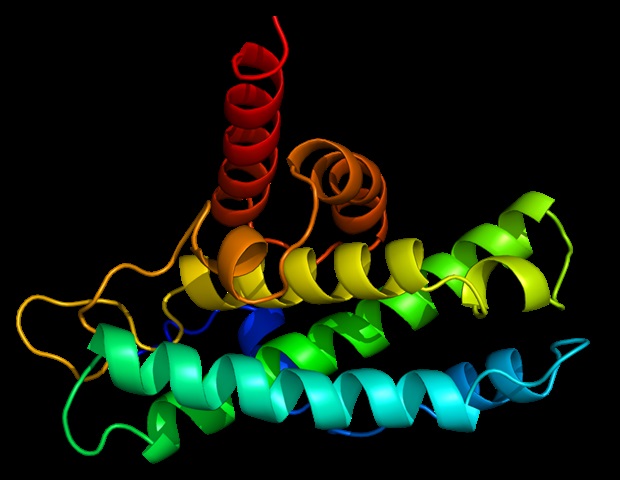Researchers at Columbia University Mailman School of Public Health have developed a novel computational pipeline designed to determine protein biomarkers related to complicated ailments, together with Alzheimer’s disease (AD). This modern software analyzes biomarkers that may induce 3D structural adjustments in proteins, offering important insights into disease mechanisms and highlighting potential targets for therapeutic intervention. The findings, printed in Cell Genomics, might result in developments in early detection and therapy methods for Alzheimer’s disease, which has lengthy eluded efficient therapies.
Alzheimer’s disease is outlined by amyloid-beta plaques and tau neurofibrillary tangles within the mind, which accumulate many years earlier than signs. Current early diagnostics are both resource-intensive or invasive. Moreover, present AD therapies focusing on amyloid-beta present some symptomatic reduction and will gradual disease development however fall in need of halting it fully. Our examine highlights the pressing must determine blood-based protein biomarkers which can be much less invasive and extra accessible for early detection of Alzheimer’s disease. Such developments might unravel the underlying mechanisms of the disease and pave the way in which for simpler therapies.”
Zhonghua Liu, ScD, assistant professor of Biostatistics at Columbia Mailman School, and senior investigator
A brand new strategy to Alzheimer’s disease
Using knowledge from the UK Biobank, which incorporates 54,306 members, and a genome-wide affiliation examine (GWAS) with 455,258 topics (71,880 AD instances and 383,378 controls), the analysis group recognized seven key proteins-;TREM2, PILRB, PILRA, EPHA1, CD33, RET, and CD55-;that exhibit structural alterations linked to Alzheimer’s danger.
“We found that sure FDA-approved medicine already focusing on these proteins might probably be repurposed to deal with Alzheimer’s,” Liu added. “Our findings underscore the potential of this pipeline to determine protein biomarkers that may function new therapeutic targets, in addition to present alternatives for drug repurposing within the struggle in opposition to Alzheimer’s.”
The MR-SPI pipeline: Precision in disease prediction
The new computational pipeline, named MR-SPI (Mendelian Randomization by Selecting genetic devices and Post-selection Inference), has a number of key benefits. Unlike conventional strategies, MR-SPI doesn’t require numerous candidate genetic devices (e.g., protein quantitative trait loci) to determine disease-related proteins. MR-SPI is a robust software designed for research with solely a restricted variety of genetic markers out there.
“MR-SPI is especially useful for elucidating causal relationships in complicated ailments like Alzheimer’s, the place conventional approaches battle,” Liu defined. “The integration of MR-SPI with AlphaFold3-;a sophisticated software for predicting protein 3D structures-;additional enhances its skill to foretell 3D structural adjustments attributable to genetic mutations, offering a deeper understanding of the molecular mechanisms driving disease.”
Implications for drug discovery and therapy
The examine’s findings recommend that MR-SPI might have wide-reaching purposes past Alzheimer’s disease, providing a robust framework for figuring out protein biomarkers throughout numerous complicated ailments. Additionally, the power to foretell 3D structural adjustments in proteins opens up new prospects for drug discovery and the repurposing of present therapies.
“By combining MR-SPI with AlphaFold3, we are able to obtain a complete computational pipeline that not solely identifies potential drug targets but additionally predicts structural adjustments on the molecular degree,” Liu concluded. “This pipeline affords thrilling implications for therapeutic improvement and will pave the way in which for simpler therapies for Alzheimer’s and different complicated ailments.”
“By leveraging giant cohorts with biobanks, modern statistical and computational approaches, and AI-based instruments like AlphaFold this work represents a convergence of innovation that may enhance our understanding of Alzheimer’s and different complicated ailments,” mentioned Gary W. Miller, PhD, Columbia Mailman Vice Dean for Research Strategy and Innovation and professor, Department of Environmental Health Sciences.
Co-authors of the examine embrace Minhao Yao, The University of Hong Kong; Badri N. Vardarajan, Taub Institute on Alzheimer’s Disease and the Aging Brain, Columbia University; Andrea A. Baccarelli, Harvard T.H. Chan School of Public Health; Zijian Guo, Rutgers University.
Source:
Journal reference:
Yao, M., et al. (2024). Deciphering proteins in Alzheimer’s disease: A brand new Mendelian randomization methodology built-in with AlphaFold3 for 3D construction prediction. Cell Genomics. doi.org/10.1016/j.xgen.2024.100700.

